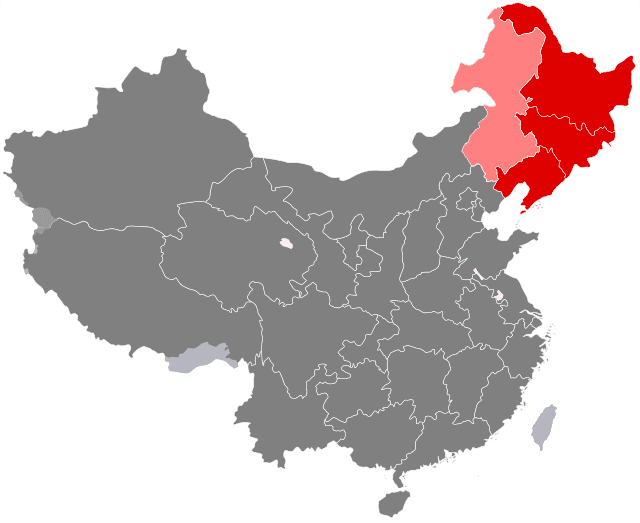
Manchuria
Geographical region in Northeast Asia / From Wikipedia, the free encyclopedia
Dear Wikiwand AI, let's keep it short by simply answering these key questions:
Can you list the top facts and stats about Manchuria?
Summarize this article for a 10 year old
Manchuria is a term that refers to a region in Northeast Asia encompassing the entirety of present-day Northeast China, and historically parts of the modern-day Russian Far East, often referred to as Outer Manchuria. Its definition may refer to varying geographical extents as follows: the Chinese provinces of Heilongjiang, Jilin, and Liaoning but broadly also including the eastern Inner Mongolian prefectures of Hulunbuir, Hinggan, Tongliao, and Chifeng, collectively known as Northeast China; the aforementioned regions plus the homelands of ancient Jurchen and their descendant Manchus ceded to the Russian Empire by the Manchu-led Qing dynasty during the Amur Annexation of 1858–1860, which include present-day Primorsky Krai, the Jewish Autonomous Oblast, the southern part of Khabarovsk Krai, the eastern edge of Zabaykalsky Krai, and Amur Oblast, collectively known as the Outer Manchuria or Russian Manchuria.
| Manchuria | |||||||||||||||||||||||||
|---|---|---|---|---|---|---|---|---|---|---|---|---|---|---|---|---|---|---|---|---|---|---|---|---|---|
 The modern sense of Manchuria refers to the red and pink area (Northeast China and eastern Inner Mongolia) | |||||||||||||||||||||||||
 A broader definition. Manchuria lies in Northeast China, coloured in red; eastern Inner Mongolia to the west, in slightly lighter red; and Outer Manchuria to the north-east, in pink. | |||||||||||||||||||||||||
| Chinese name | |||||||||||||||||||||||||
| Simplified Chinese | 满洲 | ||||||||||||||||||||||||
| Traditional Chinese | 滿洲 | ||||||||||||||||||||||||
| |||||||||||||||||||||||||
| Korean name | |||||||||||||||||||||||||
| Hangul | 만주 | ||||||||||||||||||||||||
| Hanja | 滿洲 | ||||||||||||||||||||||||
| |||||||||||||||||||||||||
| Mongolian name | |||||||||||||||||||||||||
| Mongolian Cyrillic | Манжуур | ||||||||||||||||||||||||
| Mongolian script | ᠮᠠᠨᠵᠤᠤᠷ | ||||||||||||||||||||||||
| |||||||||||||||||||||||||
| Japanese name | |||||||||||||||||||||||||
| Kanji | 満州 | ||||||||||||||||||||||||
| Kana | まんしゅう | ||||||||||||||||||||||||
| |||||||||||||||||||||||||
| Manchu name | |||||||||||||||||||||||||
| Manchu script | ᠮᠠᠨᠵᡠ | ||||||||||||||||||||||||
| Romanization | Manju | ||||||||||||||||||||||||
| Russian name | |||||||||||||||||||||||||
| Russian | Маньчжурия | ||||||||||||||||||||||||
| Romanization | Man'chzhuriya | ||||||||||||||||||||||||
The name Manchuria is an exonym (derived from the endonym "Manchu") of Japanese origin. The history of "Manchuria" (Manzhou) as a toponym in China is disputed with some scholars believing it was never used while others believe it was by the late 19th century. The area was historically referred to by various names in the Qing dynasty such as Guandong (East of the Pass) or the Three Provinces referring to Fengtian, Heilongjiang, and Jilin. Manchuria as a geographical term was first used in the 18th or 19th centuries by the Japanese before spreading to Europe. The term was promoted by the Japanese Empire in support for the existence of its puppet state, Manchukuo. Although the toponym is still used, some scholars treat the term with caution or avoid it altogether due to its association with Japanese colonialism. The term is deprecated in China due to its association with Japanese imperialism and ethnic connotations. As a result, areas once considered part of Manchuria are simply referred to as the Northeast.[1] The Three Provinces and the Northeast were also in concurrent use among the Japanese along with Manchuria until the Mukden Incident of 1931.[2]